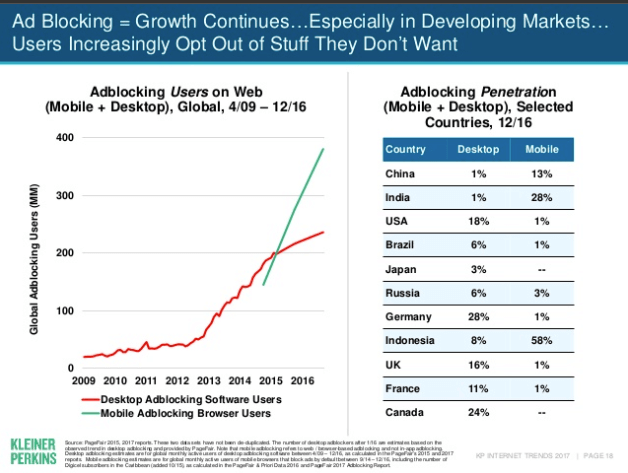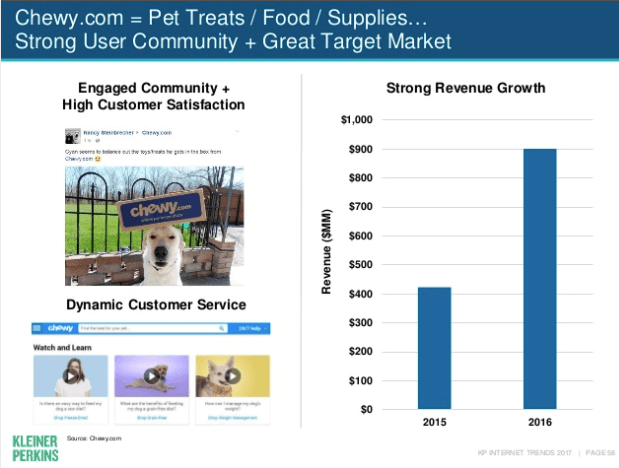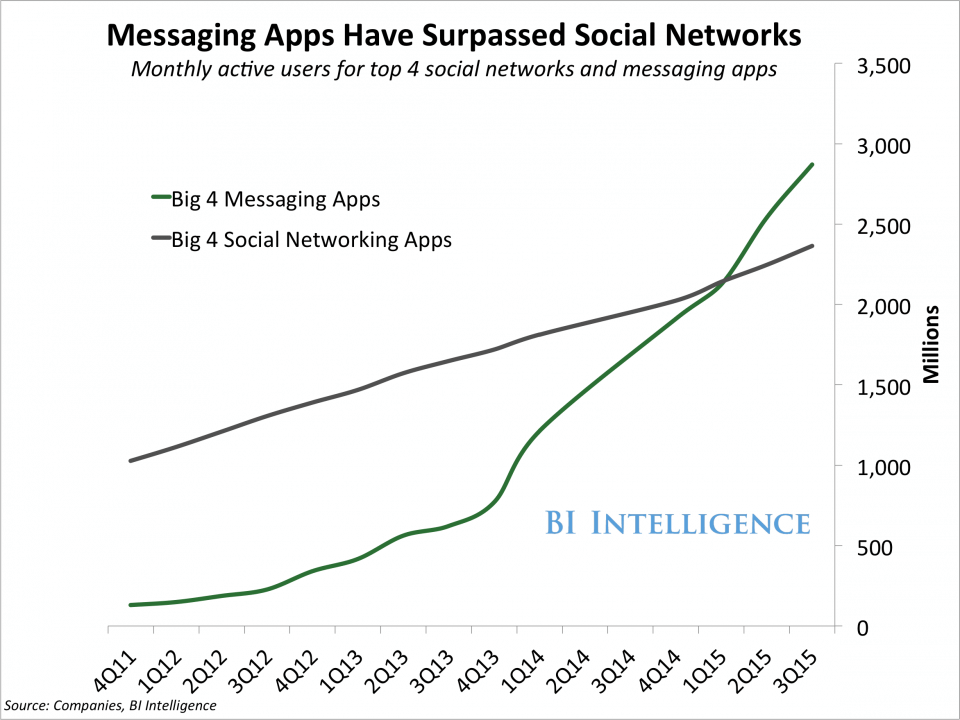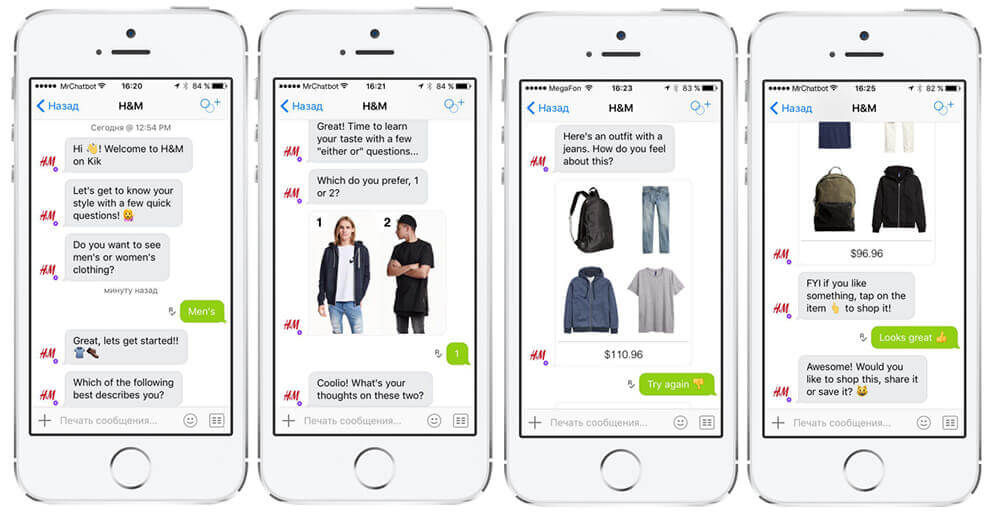From stone tablets to tablet computers, the way marketers communicate with consumers has gone through a lot of changes. The biggest shift by far has been towards consumers joining the marketing conversation.
Consumer demands, opinions, and preferences are now freely communicated, and they often dictate how and where marketers share their messages. But it wasn’t always that way.
In the beginning, there was a monologue.
The marketer was the speaker and the audience of consumers were only listeners.
Instead of trying to persuade audiences, the first marketers simply shared important information. This took place in public areas, so the messages could reach many people at once.
Some of the earliest recorded advertising dates back to Ancient Egyptian times, when huge tablets covered in lines of hieroglyphics announced laws and decrees to the community.
The tablets were selling ideas, rather than products, but this unilateral mass communication strategy persisted for centuries throughout the early history of marketing.
In the Ancient Roman city of Pompeii, large wall paintings — a sort of early billboard — provided information about upcoming gladiator games and political candidates.
The Ancient Romans also carved daily announcements, the “Acta Diurna,” on public message boards, and in some cases, merchants listed their wares on the external walls of their homes and stores.
Early Advertising and the Power (Im)balance
Virtually all these early efforts to communicate with the public — whether to share current events, or to place an ancient lost-and-found ad — were one-sided.
This naturally skewed the power balance in favor of the speaker, who was unlikely to receive audience feedback.
The audience — the people consuming the information — could not effectively share their thoughts or ask questions as they would’ve been able to do in natural conversation.
The only upside was that these efforts to communicate took place in the public sphere — outdoors and in communal gathering places. Consumers did not have to engage with the messages at home, or in other private or personal spaces.
Entering the Private Sphere
That changed, however, with the advent of the printing press in 1440, which kicked the evolution of marketing into high gear. Suddenly, the opportunity to easily duplicate ads and reach potential customers at home was created.
Still, it took time for the marketing conversation to expand from the public space into the private.
In the late 15th century, merchant William Caxton famously printed the first English handbill. In the ad, he promoted a book available at his shop, claiming that it was “good [and] chepe.”

Caxton’s flyer was likely distributed in the streets of London, making it available in public. But, due to the medium, it was consumable on a private basis.
About 150 years later, ads began to appear in newspapers that readers would purchase and take home, changing the history of advertising forever.
It was at this point that the marketing conversation tentatively entered the private space — where it has since settled like a stubborn couch potato.
Not long after that, when the Industrial Revolution hit, products were mass-produced for the first time in history. The beginnings of brand recognition and public demand for particular products emerged.
Consumers, who had been forced into the silent end of the conversation for so long, could finally talk back with their purchasing power.
This power shift would be the first step towards creating a more balanced relationship between marketers and their customers. But not before marketers took another step into consumers’ private lives.
Marketing in Your Living Room
In the early 1900s, radios became a fixture in most people’s homes. AT&T ran the first radio ad in 1922 on New York radio station WEAF.
Those 10-minutes of paid air time — a commercial for a new apartment complex in Jackson Heights — were the beginning of a major shift in advertising.
Marketers could now share their (still unilateral!) messages with consumers in their own homes. This dramatic step into the private sphere was questioned even by marketers themselves.
Advertising trade journal Printers’ Ink warned at the time that “the family circle is not a public place, and advertising has no business intruding there unless it is invited.”
The concern, however, did not stop the trend. In the history of advertising, the 1940’s and 50’s marked a period dominated by TV commercials.
The prominence of TV ads sparked notable pushback from the public in the 1960’s. Marketers were spurned as “waste makers” in a society plagued by consumerism.
Trust in advertising wavered and consumers sought honesty.
This pushback would be the harbinger of a new age of advertising. Customer participation would soon restore balance to the long-standing one-way conversation.
Now We’re Talking: Customers Enter the Conversation
Despite growing consumer skepticism, radio and television commercials continued. As time passed, traditional media ads gave way to digital ads, and the internet became widely available.
The first banner ads were deployed in 1994. Pay-per-click ads followed, and then search engine advertising. Google AdWords began running in 2000, and since then, online marketing has grown only more widespread and sophisticated.
As it has done in many contexts, the internet served as the great democratizer of the marketer-consumer relationship and the purchase process.
With digital advertising came eCommerce stores, and with them, the popularity of customer reviews.
Suddenly, the marketing conversation became a two-way street.
Not only that, but the instinctive human reliance on word-of-mouth recommendations could again take center stage. Consumers were finally empowered to easily communicate with one another about the benefits and drawbacks of products and services.
Digital advertising also pushed the marketing conversation further into our private lives.
Our computers and cellphones are private devices. We often use them in our homes, and when in public, the screens are still for our eyes only.
Instead of butting into living rooms with radio jingles and sponsored TV shows, marketers began to realize that if ads are going to reach consumers in their own homes, it should also be on their own terms.
Ad Blocking and Silencing the Conversation: Consumer Power
Not only are consumers being approached in a more fitting way, but they now also have greater ability to limit the degree to which advertisers can enter their personal space.
Instead of flipping off the radio or changing a channel and sacrificing their entertainment, they can install an ad blocker and continue their usual activities online.
Kleiner Perkins venture partner Mary Meeker’s annual internet trends deck for 2017 showed a sharp upward trend in ad blocking users on both mobile and desktop devices.

This is yet another challenge for marketers: How to reach the people behind the 600 million devices with ad blockers installed.
Creating a customer community allows brands to extend beyond the ad space and the limitations of ad blockers.
If you engage consumers in a relevant conversation about your products, your brand can grow to become part of a lifestyle for your customers.
This also organically builds a community of brand fans who advocate for your company with authentic messaging that consumers are open to and curious about, which can take the form of reviews and photos, as well as word-of-mouth recommendations.
Making the most of this type of user-generated content helps brands reach new potential customers without using traditional ads.
Letting customers join the conversation is not a bad thing for brands.
It helps them to form richer relationships with their customers, increasing long-term value and strengthening brand advocacy.

Having an engaged customer community (and a strong product, of course) leads to increased revenue.
There’s more good news: With customers creating so much content — marketers have less creative work to do. Customer content should be at the core of marketing efforts.
What’s Next in the Evolution of Marketing?
Though the pendulum has swung from unilateral brand communication to a multilateral customer-inclusive conversation, it doesn’t mean that it will keep on swinging.
Consumers do not want to be the only ones speaking.
Going into the future, brands will have to focus on maintaining the dynamic conversation that is just now beginning.
Brands wanted an “in” to the consumers’ private space. Now that they’re there, they need to change not just the message, but also the medium in order to keep up.
That means using messaging apps, chatbots, live chat support, and more.
These tools of conversational commerce are coming into their own. Last year, Business Insider found that messaging apps surpassed social networks in monthly activity.

If in recent years brands were scrambling to establish a presence on Facebook, they now need to strategize for Facebook Messenger.
Conversational commerce, despite denoting technological advancements and seeming futuristic in some ways, is simply one step further towards establishing the natural state of back-and-forth conversation that should exist between brands and their customers.
Real-time interactions in the private sphere maximize customer comfort and personalize the purchase process.
As chatbots and brand messaging strategies develop, purchasing within the messaging platform will become commonplace. The user journey will become a far less predictable, omnichannel process.

It will be more important than ever to understand your customers’ needs and to speak to them accordingly.
- Evaluate how their customers speak to one another about the brand in order to determine the right tone to strike on messenger apps.
- Identify and solve problems with products or service (and note strong points!)
For eCommerce businesses, the strength of the democratic consumer conversation is that it gives brands all the information they need to innovate and improve.
For customers, it offers a path through which to improve commerce interactions and product satisfaction.
It’s a notoriously rare, but gloriously real win-win situation.
Conclusion
Life-coaching pioneer Thomas Leonard has said that:
This couldn’t be more true for eCommerce brands and their customers.
So start talking. And listening. You never know what you might learn.
For straight-to-the-point tactics to collect and leverage customer content for your marketing plan, explore our brand new Playbook of UGC Marketing Strategies with AI.




